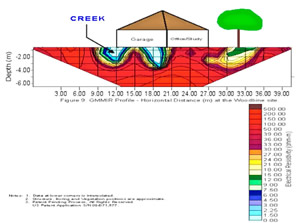

Webmaster: Stansfeld, LLC. |
|
|

MARCH 2016 MEETING
Wednesday, March 11, 2016 (1.0 PDH)
TECHNICAL PROGRAM
Investigation of Subsurface Anomalies Including Faults
Speaker: John Bryant with Bryant Consultants, Inc., Carrollton TX, Tel. (972) 713-9109.
John Thomas Bryant was born in Hobbs, New Mexico in February, 1962. He attended Texas A&M University @ College Station, Texas from 1983 to 1991. He earned the following degrees from Texas A&M: Ph.D. in Civil Engineering, MS in Civil Engineering, MS in Geography, MS in Geology, and BS in Civil Engineering.
Dr. Bryant is a Committee Member of PTI (Post Tension Institute), ASCE (American Society of Civil Engineers) and TRB (Transportation Research Board). He has been awarded three U.S. Patents.
Dr. Bryant is a Licensed Professional Engineer in the States of Texas, New Mexico, Louisiana, North Carolina, Arizona and Colorado, Arkansas, Tennessee. He is also Licensed Professional Geologist in Texas, Tennessee and Mississippi.
In 1996, Dr. Bryant established Bryant Consultants, Inc. (BCI) in Carrollton, Texas. He is currently the President of BCI. BCI provides a wide range of geotechnical engineering, earth science, and structural engineering services using state-of-the-art software, geophysical methods and in-house laboratory services.
PRESENTATION SUMMARY
 An anomaly is described as something that is not what you would expect. This is the focus of investigations that are undertaken to determine if subsurface conditions are of an expected nature, or if in fact anomalies are present which could complicate development of infrastructure. Subsurface anomalies are of many varieties and include, but are not limited to: 1) different earth materials, 2) different hydrogeological conditions, and 3) different geological structure conditions.
An anomaly is described as something that is not what you would expect. This is the focus of investigations that are undertaken to determine if subsurface conditions are of an expected nature, or if in fact anomalies are present which could complicate development of infrastructure. Subsurface anomalies are of many varieties and include, but are not limited to: 1) different earth materials, 2) different hydrogeological conditions, and 3) different geological structure conditions.
In his presentation Dr. Bryant explored methodologies and techniques to identify various subsurface anomalies with a fault investigation as an example. He will describe his use of published guidelines for Phase II fault investigations outlined in the Houston Geological Society Bulletin [HGS] (1985) entitled Recommended Standards for Investigating Geologic Faults in the Texas Gulf Coast as well as the USGS MF-1136 guidelines.
In addition, Dr. Bryant discussed how he employed other tools to aid in evaluating the presence of faults and other subsurface anomalies. These tools include the use of direct current electrical resistivity tomography methods (DCRM/ERT), the correlation of the DCRM/ERT results with soil properties and actual measured electrical resistivities from soil borings (GMMIR®), geophysical seismic techniques, as well as using Phase I techniques including more recent LIDAR (Light Distance and Ranging) and DEM (Digital Earth Models) from the USGS to aid in evaluating the site for the potential presence of a fault.
 To read summaries of previous FPA presentations by Dr. Bryant, please click:
To read summaries of previous FPA presentations by Dr. Bryant, please click:
June 2011 - Differentiation of Water Sources Using Analytical Water Chemistry Data
December 2008 - How to use the PTI-3rd Edition to Design Foundations in Houston
May 2003 - What is the Difference between PVR, PVM and Ym for Geo-Structural Models?
|



